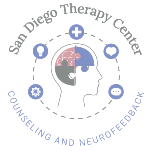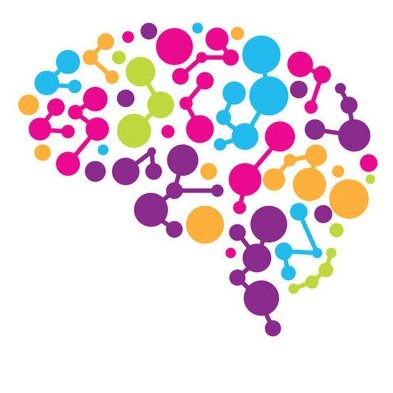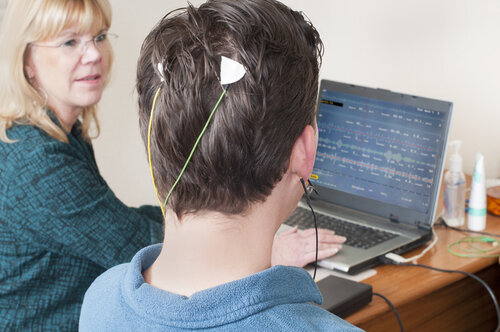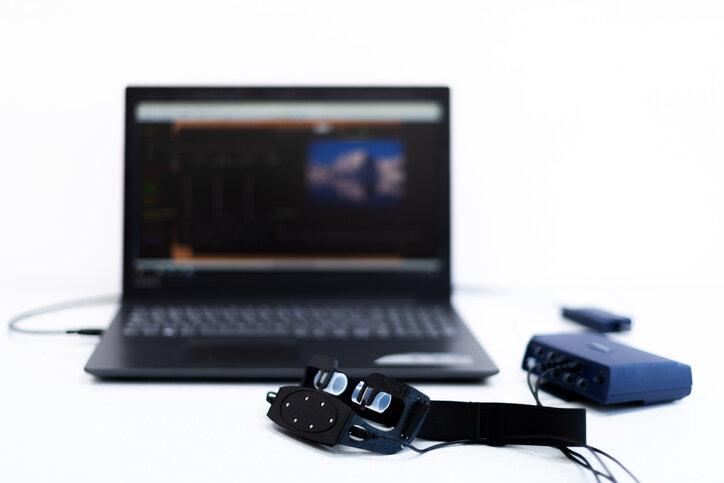Neurofeedback Treatment for ADHD
In the article, “Can Neurofeedback Effectively Treat ADHD?” author David Rabiner discusses why one should consider neurofeedback, what it is, and how it helps ADHD symptoms.

Neurofeedback is a source of therapy that trains the brain using EEG data to help patients improve their focus, impulse control, and executive function. This training involves providing feedback to the brain based on the brain waves and encouraging the brain to correct specific areas such as attention and self-control. Individuals with ADHD may pursue neurofeedback as their brains start off with low-frequency delta or theta brain waves. According to Rabiner, twenty to forty 30-minute training sessions are required to see a notable difference in one’s ADHD symptoms.
During neurofeedback sessions, practitioners use scalp sensors to read a patient’s brain activity by observing how and when a patient’s brain waves hit an optimal level (Rabiner). After an initial assessment , a treatment plan is set to provide specific feedback and encourage their brain to function in its optimal zone. Adjustments can always be made to the treatment plan as improvements occur.
Rabiner provided examples of individuals receiving neurofeedback and the results:
- Monastra, et al. (2002): 50 six to nineteen-year-olds with ADHD included neurofeedback in their treatment plan. They found that the youngest individuals had the most notable difference in their brain wave patterns, their brain waves had normalized. This pattern was found to be consistent after individuals discontinued their medication and only used neurofeedback.
- Levesque, et al. (2006): Rabiner stated that “20 eight to twelve-year-old children with ADHD were randomly assigned to receive 40 weekly neurofeedback treatment sessions, or to a waitlist control condition with no treatment.” fMRI scans showed that those who received neurofeedback experienced a significant change in their brainwave patterns versus no change for the children in the control group.
- Gevensleben, et al. (2009): Rabiner explained that 102 eight to twelve-year-olds with ADHD were randomly chosen to receive 36 neurofeedback or computerized attention training sessions over a span of 18 weeks to help with homework difficulties. They found that the children in the neurofeedback group showed 60% greater reductions of their ADHD symptoms compared to the computer attention training group and consistently maintained those levels six months later (Rabiner).
- Meisel et al. (2013): Similar to the study above, “23 seven to fourteen-year-olds were randomly assigned treatment with methylphenidate or 40 neurofeedback sessions” (Rabiner). Both groups saw a significant reduction in parent and teacher ratings of their ADHD symptoms immediately after and 6 months later training ended (Rabiner). Rabiner reported that teachers saw “significant academic improvements in reading and writing skills for only the neurofeedback group…”
Even though most of the studies were not fully blind, the research conducted still suggests that neurofeedback is a promising therapy for ADHD. Biofeedback is also rated as a Level 1 – Best Support intervention by the American Academy of Pediatrics (AAP) for ADHD symptoms. Neurofeedback is not magic or the saving grace to difficulties with attention, hyperactivity or executive functioning, but it can help.
For more information on how neurofeedback may help and lead to behavior improvements and overall reduction in ADHD symptoms, please visit San Diego Center for Neurofeedback, APPC or Contact us to schedule an appointment to start treatment right away.
~Written by Lily Schmitt and Tanya L. Hilber, PsyD.
Reference
Rabiner, David. “Can Neurofeedback Effectively Treat ADHD?” ADDitude. 3 Sep. 2020. https://www.additudemag.com/neurofeedback-therapy-treat-adhd/.
Evidenced-Based Child and Adolescent Psychosocial Interventions. (2011) Addressing Mental Health Concerns in Primary Care: A Clinician’s Toolkit. American Academy of Pediatrics.





